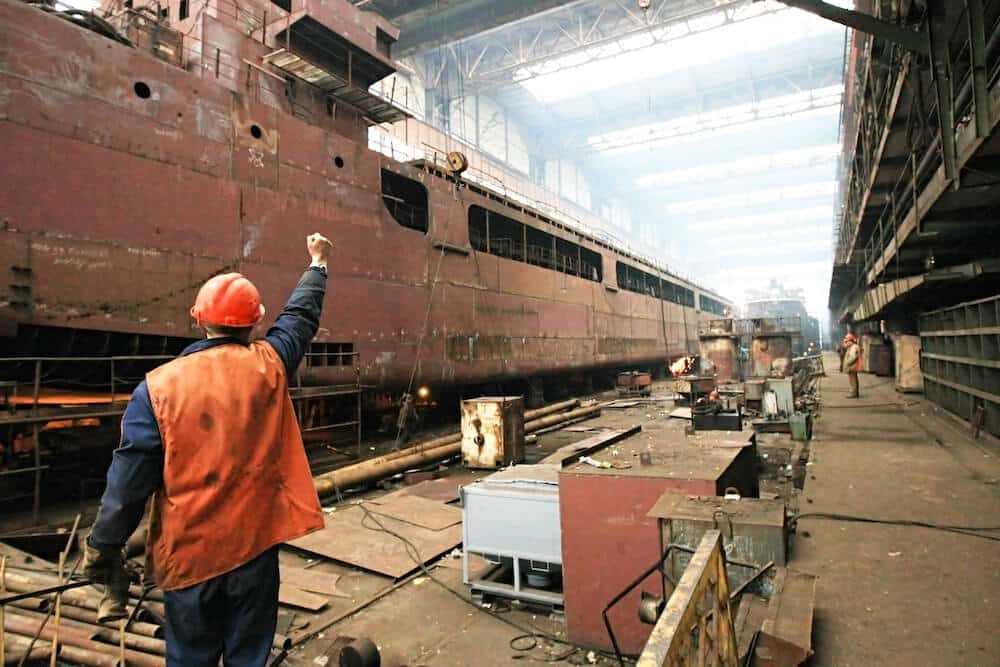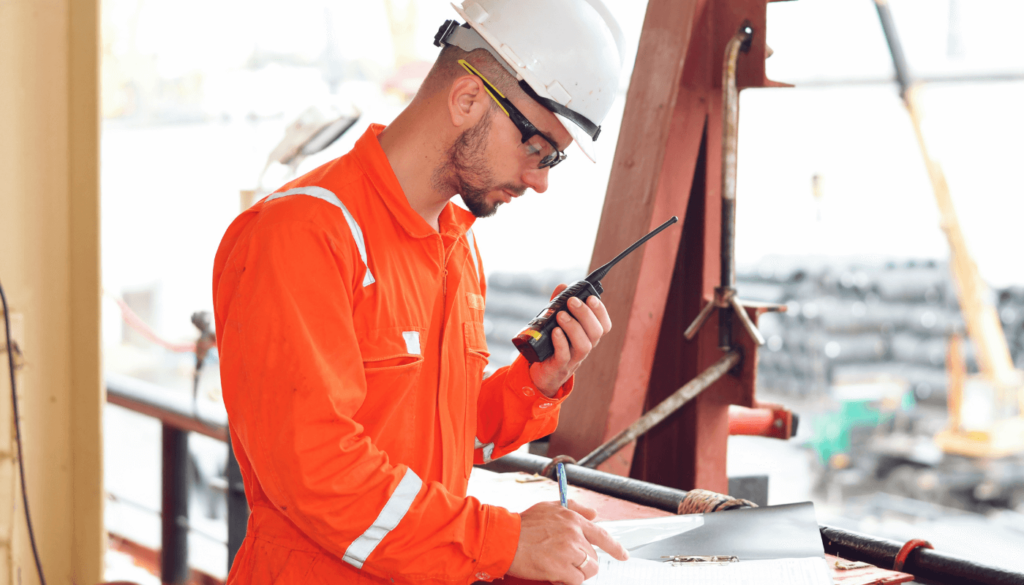Naval Architecture vs Naval Engineering vs Marine Engineering vs Ocean Engineering
The most common perception people have when introduced to the field of ocean engineering is that it deals with ships, floating bodies or the ocean.
While this is not wrong in its entirety, it is easy to mistake ocean engineering for several other fields, such as naval architecture, naval engineering, marine engineering and other maritime courses. In reality, ocean engineering is an exclusive area of study that is exclusive in its own right.
These varied courses have different aspects about them that make each one unique. Right from the conception of an idea to the day when the ship or boat is finally decommissioned from a fleet, these marine engineers and naval architects work in tandem to ensure that their work is of the highest standard.
However, what each of these fields offers is very diverse and is generally mutually exclusive. To be a successful engineer, it is important to understand the key differences between these fields.
What is Naval Architecture?

When an idea for a ship or a boat is first conceived, generally by fleet operators such as Maersk or GPO, or by the navies of various countries, it is the naval architects who step in to flesh out the ideas provided to them.
They work in several stages to provide a comprehensive plan regarding the design and production techniques to ensure the timely delivery of the vessel. The delivery of the ship plans and any added adjustments that need to be made are handled by the naval architects assigned to a particular vessel.
Related Reading: What is Naval Architecture: Careers, Courses And Jobs For Naval Architects
As such, naval architects require additional courses and qualifications to oversee the manufacturing and actual production procedure. They can make changes from time to time based on updated design structures and innovations and provide these suggestions to the naval engineers who handle the manufacturing process.
Related Reading: What Do Naval Architects Do?
However, their work is not completed by simply handing over the design of the ship. They are required to conduct extensive sea trials with the prototypes to ensure that safety standards and vessel specifications are met.
Related Reading: 10 Important Books On Naval Architecture
Generally, they are provided with information such as the required top speed, cruising speed, turning capabilities, expected deadweight, etc. Before the design phase is over, they must carry out preliminary calculations. However, after the lightship (ship with only the essential components, without outfitting) construction is completed, they may need to recalibrate the design to meet the specifications in the contract.
Related Reading: Different Career Options In Naval Architecture
What is Naval Engineering?
Naval engineering is a discipline closely related to the construction and maintenance of all floating structures that have to move under their own power.
This includes conventional ships, cargo carriers, submersible vehicles, and submarines (rigs fall under the purview of ocean engineering). Naval engineers are highly sought after to oversee the construction and other operations of these vessels.

However, they require additional courses and training to be able to sail on a ship as an onboard engineer. Their main responsibility is regarding the management of the manufacturing, outfitting and repair processes concerning seaborne vessels.
They can suggest changes and updates to the naval architects who design the vessels but, similarly are required to undergo additional training in order to be considered qualified to design a ship and its associated structures.
In today’s world of military dominance and might, naval engineers are tasked with the deployment of several naval vessels, which could range from small boats such as the Coast Guard patrol vessels to the behemoths of engineering- the aircraft carriers.
For such vessels of national importance, naval engineers are required to take on the management of the procurement, manufacturing and production stages so that they are all completed in a timely manner while ensuring that they meet the standards meant for the navy.
What is Marine Engineering?
One of the most popular fields in today’s transport industry is marine engineering because of the rising demand for cargo carriers and naval warships or submarines.
Marine engineers are qualified to design ships while working with naval architects and can oversee construction of the vessel alongside naval engineers.

In addition to this, they conduct the major portion of the sea trials and have extensive experience in other fields of engineering, such as electrical, electronics, and mechanical engineering.
Since they specialize in multiple aspects of the naval world, they are often required to work closely with naval architects and naval engineers to ensure that industry standards are met and that schedules are kept.
Related Reading: What Is Marine Engineering: Courses, Job Description & Salary
Marine engineers can also specialize in offshore work such as oil rigs and energy production devices. In such cases, they work hand-in-hand with ocean engineers, researchers and scientists in an effort to utilize the ocean resources to the fullest.
What are maritime courses?
Maritime courses stand apart from the other fields of study, based on the fact that these maritime courses qualify an individual to man the ship and its associated machinery. By completing these courses, one can serve onboard ships as an engineer.
An important point to keep in mind is that individuals from other fields of marine and naval courses are also qualified to serve as the chief engineer on board vessels, with a certain amount of training. However, to serve as the officer of a ship, one must complete maritime courses.
Maritime courses train individuals to handle vessels and instruct them in the basics of naval engineering and architecture. Components of a ship, such as the propulsion, navigation, and steering systems, fall under the control of these officers.
With such a course, a person is qualified to sail any type of vessel that they have taken a license for. They work closely with other engineers and architects to be able to ensure safe and efficient handling of the vessel.
Related Reading: Difference between nautical science and marine engineering
What is Ocean Engineering?
Briefly put, ocean engineering is a field that deals with the construction, maintenance, design and functionality of structures that are used to harness the power of the ocean and its resources for non-conventional uses.
These include, but are not limited to the production of energy through tidal research and the adoption of unorthodox transportation methods along inland rivers and water bodies.

Ocean engineers are often tasked with ensuring that they design offshore structures which are competent with modern safety standards, and achieve the set target with maximum efficiency. They are qualified to handle projects such as government defence undertakings, desalination plant operations, oil rig construction, and sustainable, safe port designs.
Land reclamation is an upcoming field in ocean engineering, owing to the increasing population density in most parts of the world. Moreover, with the rapid depletion of lithospheric oil fields, oil rig deployment and maintenance are other fields of growing importance. Similarly, another modern research area in ocean engineering is the study of silt deposition around structures floating in the ocean.
The importance of ocean engineering
With vast swathes of oil fields being depleted, thanks to the frequent drilling operations undertaken by several private and government entities, future generations are faced with the prospect of not having sufficient oil to power transportation and industrial machinery. Moreover, as fossil fuel deposits have reached an all-time low, there is an urgent need in the market for an alternate source of energy.
The oceans provide an entirely new area to explore for alternative resources, and operations are underway to harness both tidal energy as well as oil deposits below the ocean floors to meet energy demands. In addition to this, ocean engineers are increasingly being consulted for the development and deployment of underwater submersibles, either for research purposes or for defence operations.
Related Reading: Difference between ocean engineering and naval architecture
Unlike the other industries dependent on oil prices for their fortunes, ocean engineering is a new discipline, with several exciting opportunities yet to be explored. From advanced desalination techniques to the efficient construction of offshore structures, ocean engineering is a sustainable and alternative route to meet rising global energy and resource demands.
In addition to this, ocean engineering is slowly branching out to work in collaboration with oceanographers so that research expeditions can go into the depths of previously unexplored ocean sectors. By doing so, new inroads can be made not just into ocean bed studies and underwater current tracking but also into evolutionary patterns that were previously unknown.
What can we conclude from this?
When provided with so many options to pursue in the engineering field, it can often be mind-boggling to select a single course to move ahead with. To compound this problem, people are generally not clear about the differences that arise between such courses.
Besides, without properly assessing the shifting global trends based on burgeoning oil prices and transportation costs, it is common for individuals to stick to the tried and tested fields of naval architecture or engineering. However, ocean engineering provides a different route to achieving the same goals.
Moreover, for prospective students and experienced industry specialists, a clear and proper understanding of what each field offers is of utmost importance since it provides clarity regarding what you will be qualified to handle after an investment of several years of effort and dedication.
While all these courses are varied and diverse, they each contribute to producing efficient, seaworthy vessels and other associated projects. Irrespective of the route one finally takes, it is important to positively contribute and create innovation in their chosen area of specialization.
Disclaimer: The authors’ views expressed in this article do not necessarily reflect the views of Marine Insight. Data and charts, if used, in the article have been sourced from available information and have not been authenticated by any statutory authority. The author and Marine Insight do not claim it to be accurate nor accept any responsibility for the same. The views constitute only the opinions and do not constitute any guidelines or recommendation on any course of action to be followed by the reader.
The article or images cannot be reproduced, copied, shared or used in any form without the permission of the author and Marine Insight.
Do you have info to share with us ? Suggest a correction

About Author
Ajay Menon is a graduate of the Indian Institute of Technology, Kharagpur, with an integrated major in Ocean Engineering and Naval Architecture. Besides writing, he balances chess and works out tunes on his keyboard during his free time.
Latest Marine career Articles You Would Like:
Subscribe To Our Newsletters
By subscribing, you agree to our Privacy Policy and may receive occasional deal communications; you can unsubscribe anytime.
















